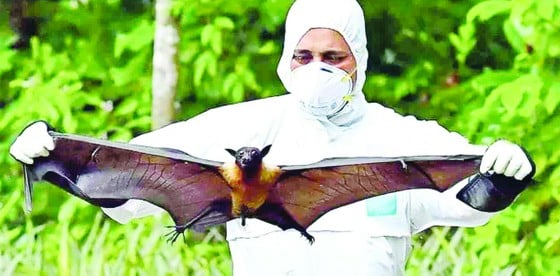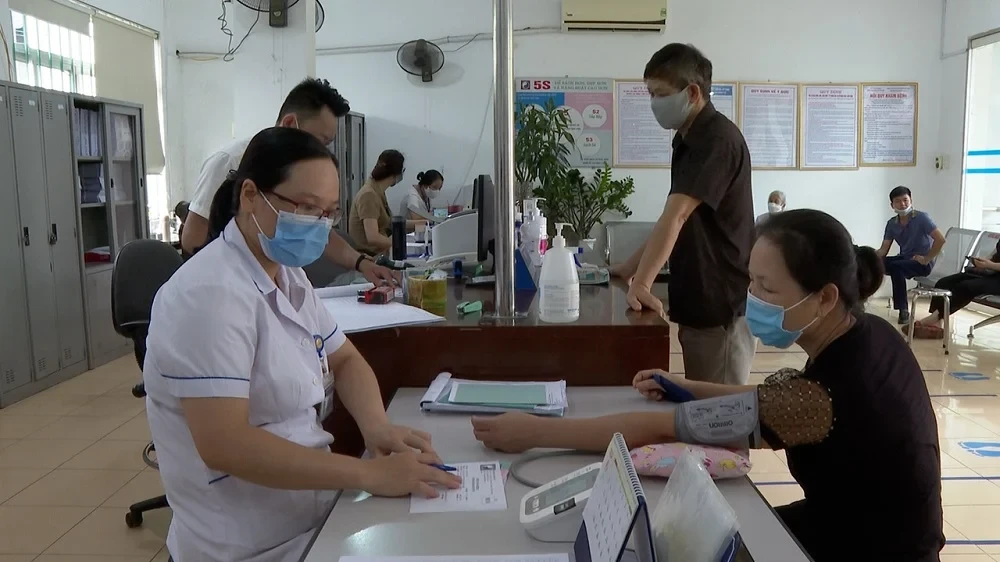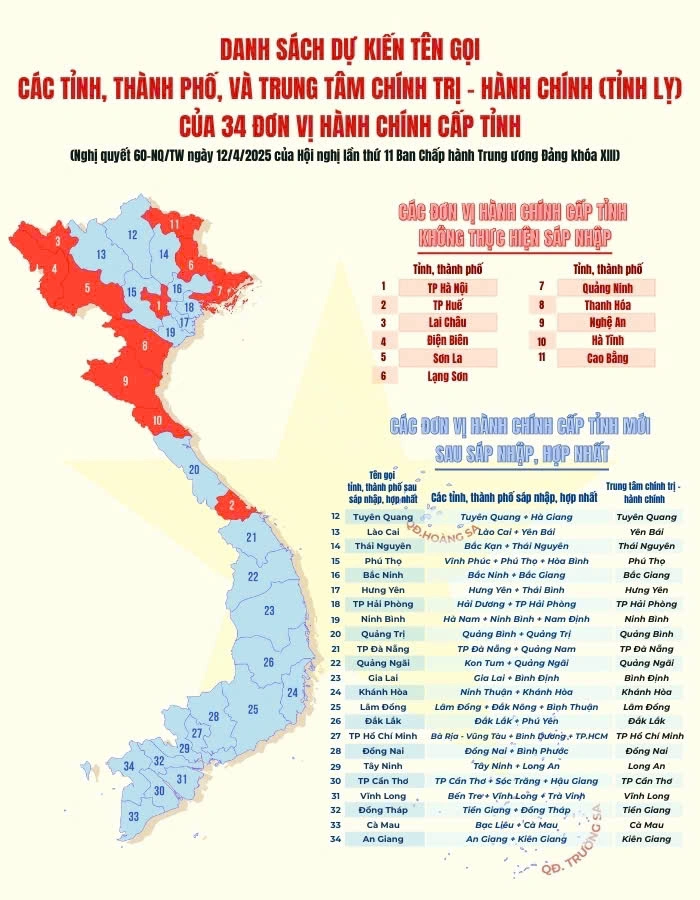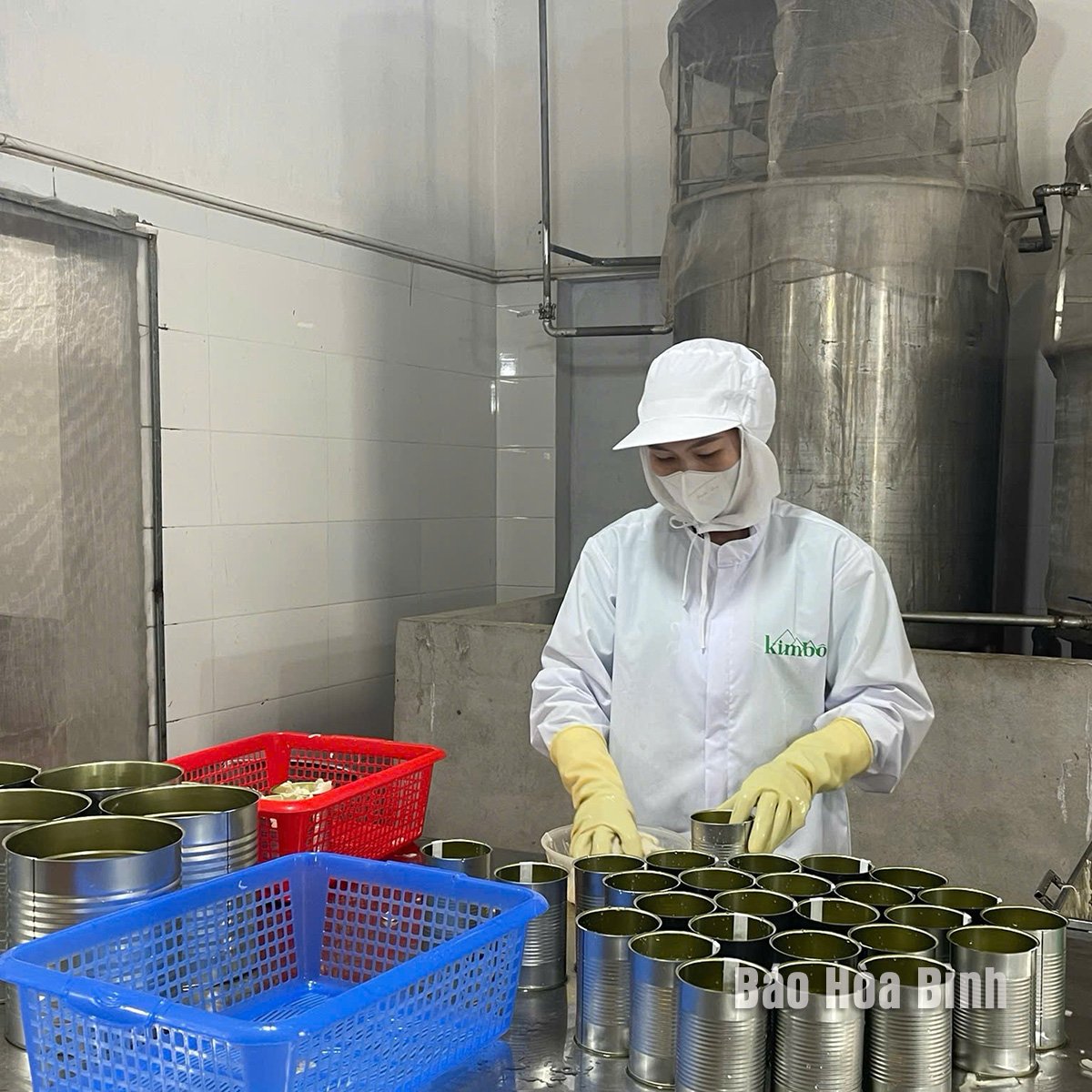SGGP
According to Hindustan Times, Kerala Chief Minister Pinarayi Vijayan has just announced that 36 samples collected from bats in Kerala have tested negative for the Nipah virus. This is the area where the dangerous Nipah virus has broken out for more than a week.
 |
| Health workers in India take samples from bats |
Kerala has so far reported six cases of Nipah virus, including two deaths and four active cases. There have been no new cases in Kerala in the past 24 hours, with dozens of samples from people with high-risk symptoms returning negative. These results suggest that the threat of the virus has diminished. However, Kerala officials remain vigilant against the outbreak.
According to Kerala’s health minister Veena George, nine states (including Kerala) are at high risk of Nipah infection. Six cases of Nipah in Kerala have been identified as the Indian genotype, or genotype I, similar to the strain found in Bangladesh. There are two strains of Nipah, one from Malaysia and one from Bangladesh.
To date, there is no vaccine or treatment for Nipah virus infection. The disease has a mortality rate of up to 70%. Scientists at the National Institute of Virology in India first identified Nipah virus in bats in Maharashtra state. This virus is commonly found in bats and rats and is listed by the World Health Organization (WHO) as one of the most dangerous viruses in the world.
India has previously recorded four Nipah virus outbreaks in 2018 and 2019 in Kerala and in 2001 and 2007 in West Bengal. The Nipah virus also broke out in 1998 in Malaysia and Singapore, killing over 100 people and infecting nearly 300. Since then, the Nipah virus has spread, with a mortality rate ranging from 72% to 86%. WHO data shows that between 1998 and 2015, over 600 cases of Nipah virus infection in humans have been recorded. Kerala is among the places globally at highest risk of bat-borne virus outbreaks like Nipah.
The recent increase in Nipah virus infections has raised concerns among WHO about the outbreak of a pandemic similar to Covid-19. WHO has listed Nipah virus as one of 16 pathogens that need priority research and development, due to its potential to cause epidemics, along with viruses such as Marburg and Ebola viruses, Crimean-Congo hemorrhagic fever, Lassa fever, etc.
According to scientists, the important thing is not the Nipah virus, or any other disease-causing virus, but the ability of humans to prevent and cope. The best way to prevent Nipah virus infection is to minimize direct contact with potentially infected animals, wash fruits and vegetables, and peel fruits before eating. The US Centers for Disease Control and Prevention (CDC) recommends that people living in areas where the disease is occurring regularly wash their hands with soap and water, and avoid contact with the body fluids or blood of infected people.
According to the CDC, Nipah virus can be transmitted directly to humans through contact with bodily fluids of infected bats and pigs. Other cases of transmission have been recorded from humans. Symptoms of Nipah virus infection include fever, headache, drowsiness, disorientation, mental confusion, and coma, which can lead to death.
Source


![[Photo] National Assembly Chairman Tran Thanh Man meets with General Secretary and President of China Xi Jinping](https://vstatic.vietnam.vn/vietnam/resource/IMAGE/2025/4/14/4e8fab54da744230b54598eff0070485)


![[Photo] Tan Son Nhat Terminal T3 - key project completed ahead of schedule](https://vstatic.vietnam.vn/vietnam/resource/IMAGE/2025/4/15/85f0ae82199548e5a30d478733f4d783)
![[Photo] Reception to welcome General Secretary and President of China Xi Jinping](https://vstatic.vietnam.vn/vietnam/resource/IMAGE/2025/4/15/ef636fe84ae24df48dcc734ac3692867)

























![[Photo] Prime Minister Pham Minh Chinh meets with General Secretary and President of China Xi Jinping](https://vstatic.vietnam.vn/vietnam/resource/IMAGE/2025/4/14/893f1141468a49e29fb42607a670b174)































































Comment (0)